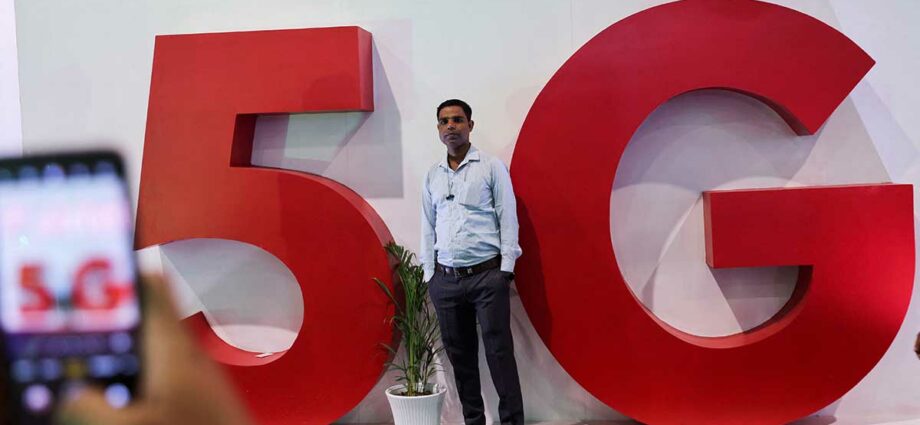Most telcos say the speed will surpass fixed broadband as the 5G roll out, which is currently on 360,000 towers, crosses 400,000.
Within a year of the launch of 5G, the download speeds on smartphones have rapidly caught up with those of fixed fibre broadband.
In August, the median country download speed for mobile data, according to Ookla’s Speedtest Global Index, stood at 50.21 mbps, just a few points behind a fixed broadband connection at 54.17 mbps.
Most telcos say the speed will surpass fixed broadband as the 5G roll out, which is currently on 360,000 towers, crosses 400,000.
A year ago, in October, the gap between the two platforms was threefold; mobile speeds were only 16.50 mbps (on 4G) compared to 48.19 mbps on fixed broadband.
The speed increase on 5G mobile devices has helped India surge in the Ookla Speedtest global rankings from 113 in October last year to 47 today.
During the same period, the speed for fixed broadband has gone down from 79 in October last year to 86 in August because the fixed broadband speed increased only by a nominal 12 per cent.
What is interesting is that, based on median speeds, India’s 5G mobile download speeds were far ahead of the global average of 43.20 mbps.
But for fixed broadband, India was far behind the global average as the speed has grown very slowly to 82.77 mbps.
The catch-up has caught the attention of Communications Minister Ashwini Vaishnaw who told Business Standard in an interview on the new usage trends post-5G that many subscribers are moving away from Wi-Fi to using mobiles with 5G.
However, given the launch of fixed wireless broadband (FWA) by Airtel and Reliance Jio, the game could change again.
FWA is faster to roll out as the last-mile connectivity on fibre, which is cumbersome to lay, is replaced by 5G spectrum (3.5 GHz) in many areas where customers require very high speeds with an overlay of the millimetre band (26 GHz).
The Jio Fibre offer (which is FWA) has promised speeds of between 300 mbps to 1 GB. But with the millimetre band — which has low coverage but very high speeds — this could go well over 1 GB, say experts.
The millimetre band can be used by corporates, private networks and in areas of very high population density where higher speed is needed.
But then, the same millimetre band can be used to power the smartphone and offer equivalent high speeds like the FWA.
Currently, though, there are no phones in the country powered by a millimetre band. Only limited numbers are available overseas as well.
Mobile device makers say the addition will increase the cost of the phone by $20 to $40.
While neither Airtel nor Reliance Jio have yet announced 5G on the millimetre band with super high speeds, they have said privately that it will be available in the next two to three years.
Feature Presentation: Ashish Narsale/Rediff.com
Source: Read Full Article
-
Dispatches From The Picket Lines – “We Are Here With You ’Til The Very End,” Writers Tell Actors At AAPI-Themed Rally In Manhattan
-
China Manufacturing Activity Stagnates In March
-
U.S. Employment Jumps By 233,00 Jobs In December, Slightly More Than Expected
-
Asian Shares Mixed After Chinese Inflation Data
-
PLI scheme incentive outgo could be less than Rs 40,000 crore by FY25


